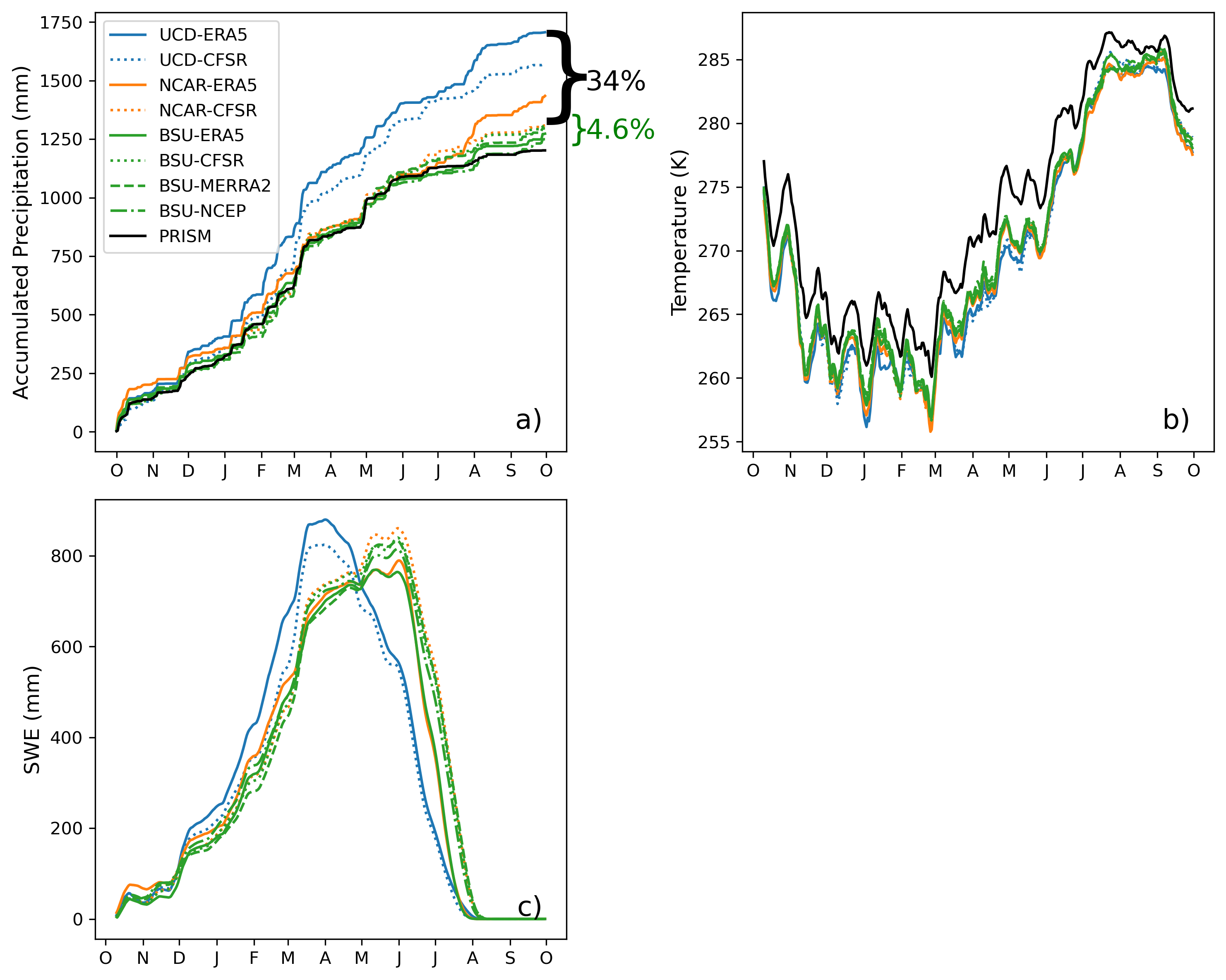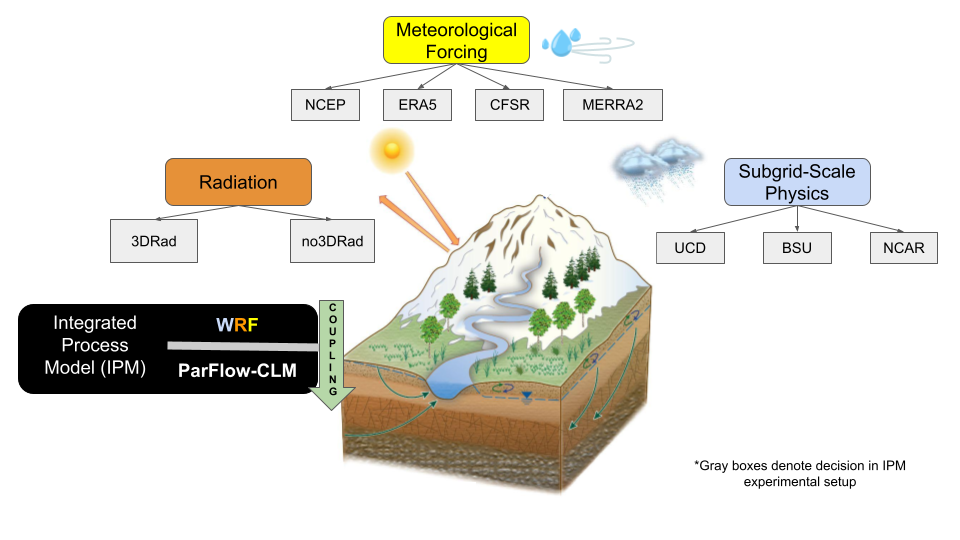Sensitivities of physics schemes and meteorological data sets in integrated process models
Submitter
Xu, Zexuan — Lawrence Berkeley National Laboratory
Feldman, Daniel — Lawrence Berkeley National Laboratory
Area of Research
General Circulation and Single Column Models/Parameterizations
Journal Reference
Xu Z, E Siirila-Woodburn, A Rhoades, and D Feldman. 2023. "Sensitivities of subgrid-scale physics schemes, meteorological forcing, and topographic radiation in atmosphere-through-bedrock integrated process models: a case study in the Upper Colorado River basin." Hydrology and Earth System Sciences, 27(9), 10.5194/hess-27-1771-2023. ONLINE.
Science

Figure 2. (a) Cumulative precipitation, (b) 2m surface air temperature, and (c) snow water equivalent (SWE) simulated within the SAIL study area using an IPM with different subgrid-scale physics schemes and meteorological forcings. The cumulative precipitation and temperature results are compared relative to PRISM. The 10-day moving averages of daily temperature are shown in (b). The percent difference in cumulative precipitation across subgrid-scale physics schemes (black brackets) and meteorological forcing (green brackets), calculated by (maximum-minimum)/minimum*100, is provided on the right y axis. From journal.

Figure 1. The conceptual framework for developing a perturbed-physics ensemble of IPM simulations using a set of different WRF configurations to evaluate the sensitivities of mountain water and energy budgets to choices of subgrid-scale physics parameterization, meteorological forcing, and radiation scheme. From journal.
Mountain hydrology is controlled by interacting processes extending from the atmosphere through the bedrock. Integrated process models (IPMs) are essential to interpret observations and refine conceptual models of the mountainous water cycle. We performed a series of simulation experiments with plausible sets of subgrid-scale physics, meteorological forcing, and topographic radiation schemes to identify the best scenarios for modeling mountainous hydrology at the U.S. Department of Energy (DOE) Atmospheric Radiation Measurement (ARM) user facility's SAIL field campaign study area.
Impact
This work determined what atmospheric research is needed to advance the predictive understanding of the water resources produced by the Upper Colorado River Basin. Should the community focus on improved modeling of large-scale circulation or, instead, focus on improved modeling at the watershed scale? Through a series of perturbed-physics ensemble experiments using an IPM, we show that the uncertainty in water resource projections is dominated by uncertainties in atmospheric process representations at the watershed scale.
Summary
We produce a perturbed-physics ensemble covering the water year 2019 (WY19) using four meteorological forcings derived from commonly used reanalysis data sets, three subgrid-scale physics scheme configurations in WRF, and two terrain-shading options within WRF. We use this ensemble to test the relative importance of these experimental design choices for key hydrometeorological metrics including precipitation and snowpack, as well as evapotranspiration, groundwater storage, and discharge simulated by the ParFlow-CLM. Results reveal that the WRF subgrid-scale physics configuration leads to a much larger spatiotemporal variance (>4x) in simulated hydrometeorological conditions than the variance due to different but still plausible synoptic-scale meteorological forcings. River discharge shows a greater variance in response to the WRF simulations across subgrid-scale physics schemes (26 %) than meteorological forcing (6 %). The topographic radiation option has minor effects on the watershed-average hydrometeorological processes but its inclusion introduces spatial heterogeneity in local energy budgets (±30 W m−2 in shortwave radiation and 1 K air temperature differences in late summer).
Keep up with the Atmospheric Observer
Updates on ARM news, events, and opportunities delivered to your inbox
ARM User Profile
ARM welcomes users from all institutions and nations. A free ARM user account is needed to access ARM data.


















